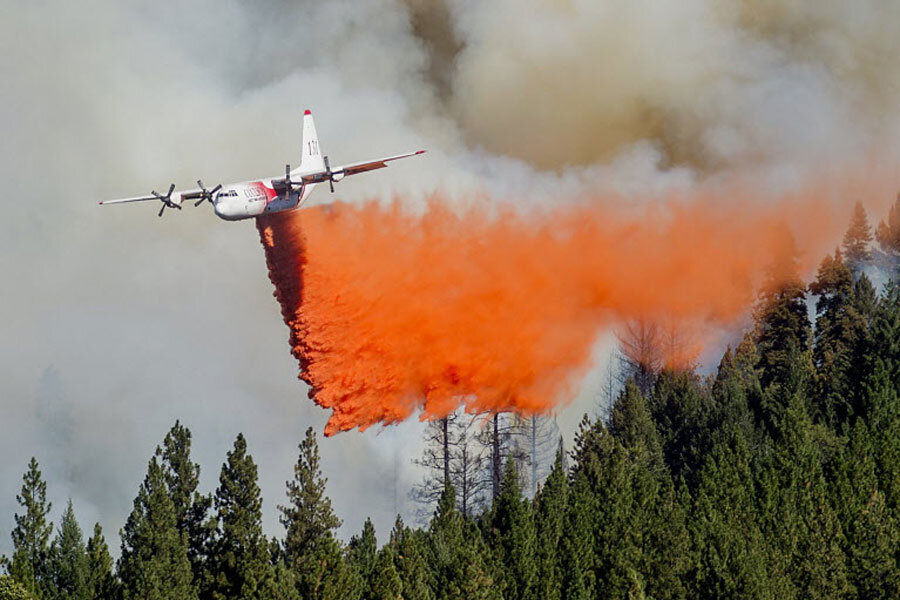Air tanker crash highlights age of California's firefighting aircraft
| Los Angeles
[Editor's note: This story has been updated to reflect the correct source of a study, which was done by EcoWest.org.]
The air tanker that crashed into a granite cliff Tuesday while battling a wildfire in Yosemite National Park is being seen as an opportunity to examine the circumstances and perhaps assess the aging fleet of planes used by the California Department of Forestry and Fire Protection (Cal Fire), experts say.
The crash, which killed pilot Geoffrey "Craig" Hunt, also spotlights the dangers and escalating monetary cost of firefighting with planes, a practice that has increased in recent years, especially as a result of California’s lengthening fire season during its historic drought.
“This crash underscores just how inherently dangerous wildland firefighting is and the job is further compounded this year by extreme fire conditions,” said Chief Ken Pimlott, director of Cal Fire, in a written statement.
The S2-T tanker crashed while fighting the 150-acre Dog Rock fire near the park border, which broke out at about 2:45 p.m.
It was one of 23 such planes owned by Cal Fire, which are considered the workhorses of the US firefighting fleet. Used in the early stages of a fire, they are valued for their small size and maneuverability, and are able to return for refills many times a day.
But the planes, which have been retrofitted with turbine engines and fitted with bins that can carry 1,200 gallons of retardant, have come under scrutiny in recent years because they are 50 years old – in some cases, older.
“In my opinion, we should not be converting Korean War and older aircraft designed to haul torpedoes across the water, into planes that need to fly low and into steep canyons,” says Bill Gabbart, a wildfire expert who runs the website Wildfire Today. “It would cost money, but we need to design an entire plane from the wheels up, for flying into these canyons.”
While the Federal Aviation Administration and National Transportation Safety Board have begun investigations into Tuesday's crash, Mr. Gabbart says there are unconfirmed reports of two pilots who say they saw the plane’s wing hit a tree.
Experts say such crashes are very rare. There have been 35 air-tanker-related deaths in the past century, according to a study by Mitch Tobin, editor and founder of EcoWest.org. There have been 56 helicopter and 59 other aviation related deaths, according to the study. That’s contrasted with 441 deaths on the ground.
The state with the most wildland firefighter deaths over the past century was California, with 334 deaths, followed by Idaho, with 127.
The issue is what the public values, and what are the risks of a continued push to develop the wilderness/urban interface, known as WUI, experts say.
“For any aviation assignment, the question begins with what are the values at risk, and how high is the likelihood of success compared with the level of risk we are willing to accept and manage,” says Ron Steffens, chairman of Wildfire Magazine’s editorial board. “The Cal Fire fleet sets a high standard for fleet quality and training. But any form of aerial retardant work requires risk that we – fire managers, land managers, and the public – agree both to understand and share.”
Cal Fire spokesman Daniel Berlant says that, before Wednesday, the last accident involving a Cal Fire tanker was in 2001, when two Cal Fire tankers collided in midair while battling a wildfire in Mendocino County.
He says their aircraft maintenance program has received several awards from the FAA, but that Cal Fire has grounded its remaining 22 air tankers statewide as a precaution following the crash.





